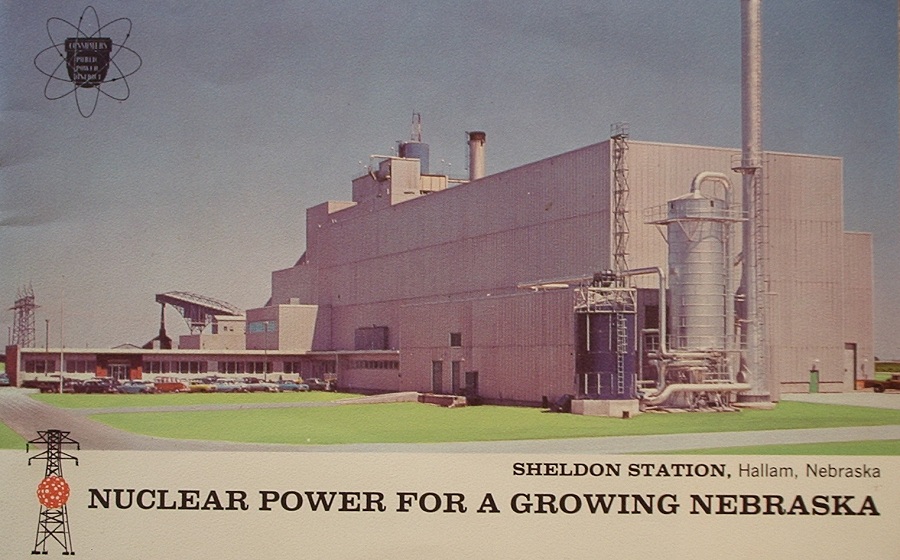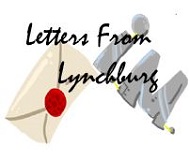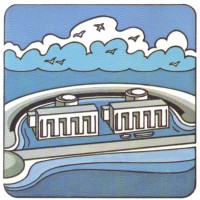What Did We Learn From Three Mile Island?
Thirty-five years ago this week, a nuclear reactor located on an island in the Susquehanna River near Harrisburg, Pennsylvania, suffered a partial core melt.

Thirty-five years ago this week, a nuclear reactor located on an island in the Susquehanna River near Harrisburg, Pennsylvania, suffered a partial core melt.

Hallam Nuclear Power Facility; part of Sheldon Station.
In our previous installment we looked at the Atomic Energy Commission (AEC) Five Year Plan for development of commercial nuclear power in the United States. In this final installment, we'll look at two programs that were initiated in the mid-1950s to help launch the era of construction of commercial power reactors-the Civilian Application Program, and the Power Demonstration Reactor Program.
[Richard Rhodes, historian and author of numerous books including the Pulitzer Prize-winning The Making of the Atomic Bomb, was the keynote speaker at a special dinner held in observance of the 75th anniversary of the discovery of nuclear fission at the American Nuclear Society 2013 Winter Meeting. Many ANS members and others, both in attendance and unable to attend, have expressed a desire to see in print his remarkable presentation on the fundamental technological revolutions and advances of the past century, especially the monumental discovery and application of nuclear technology. The speech is printed in its entirety in the January edition of Nuclear News, and below.]

Westinghouse Electric Corporation promotional illustration showing "PWR" (Shippingport Atomic Power Station) plant and site. "Selected Articles on Nuclear Power," Westinghouse Electric (see sources).
The commercial nuclear power program in the United States was sparked by the Shippingport Atomic Power Station project-but one project does not a program make. Action by the U.S. Congress soon after the announcement of the project ensured that a wide program that would evaluate other approaches was launched:

Futuristic illustration from 1955 Progress Report, Atomic Power Development Associates, published March 1956. This would become the Enrico Fermi Atomic Power Plant.
President Eisenhower's momentous Atomic Power for Peace speech to the United Nations in December 1953 included the bold statement: "It is not enough to take this weapon [a metaphor for atomic energy, specifically as weaponized only] out of the hands of soldiers. It must be put into the hands of those who will know how to strip its military casing and adapt it to the arts of peace." With that, he effectively launched the civilian nuclear power business as we know it today-of course, it having since undergone many changes and evolutions. What's little spoken of today is what happened before and after this speech.
Editor's note: December 11 marked the 59th anniversary of the founding of the American Nuclear Society. After posting a note on ANS Facebook with an image of the ANS 1st annual meeting program cover, the thought struck... "Well, perhaps some readers would be interested in perusing the 1954 meeting program itself." So, presenting the ANS 1st annual meeting technical program-along with accompanying introductory letter at bottom of post. Click images or here to access (enlargeable!) program .pdf
Conventional wisdom says that the general public was introduced to atomic energy by the explosions at Hiroshima and Nagasaki. According to that version of history, the introduction instilled a strong dose of fear that remains to be overcome.
 On September 12, 1933, slightly more than 80 years ago, Leo Szilard was the first person to imagine a reasonable mechanism for releasing the vast quantities of energy known to be stored in atomic nuclei. As it turned out, his concept worked the first time it was tried on December 2, 1942.
On September 12, 1933, slightly more than 80 years ago, Leo Szilard was the first person to imagine a reasonable mechanism for releasing the vast quantities of energy known to be stored in atomic nuclei. As it turned out, his concept worked the first time it was tried on December 2, 1942.
 Shortly after 11 a.m. on Tuesday, May 7, 2013, the operators at Dominion Resources' Kewaunee nuclear power plant opened its output breaker, disconnecting the turbine generator from the grid for the last time after just under 40 years of operation. Shutdown of the reactor followed, and the plant entered what for some is an uncertain (even if pre-ordained) future-a long-term storage period, followed eventually after many years by the complete dismantling and removal of the plant.
Shortly after 11 a.m. on Tuesday, May 7, 2013, the operators at Dominion Resources' Kewaunee nuclear power plant opened its output breaker, disconnecting the turbine generator from the grid for the last time after just under 40 years of operation. Shutdown of the reactor followed, and the plant entered what for some is an uncertain (even if pre-ordained) future-a long-term storage period, followed eventually after many years by the complete dismantling and removal of the plant.
This week's announcement by Babcock & Wilcox that it had signed the long-awaited funding agreement with the Department of Energy has been taken by advocates of small modular reactors (SMRs) as just the latest good news on the inevitable path to construction of at least one prototype nuclear plant using SMR reactor technology in the United States. It is widely hoped that this is the harbinger of the rapid spread of the market for SMR plants.
 On Sunday, March 31, 2013, just a few months before his 91st birthday, Ted Rockwell passed away quietly in his sleep. His passing has stimulated a profound sense of loss among nuclear energy professionals.
On Sunday, March 31, 2013, just a few months before his 91st birthday, Ted Rockwell passed away quietly in his sleep. His passing has stimulated a profound sense of loss among nuclear energy professionals.
While Shippingport Atomic Power Station in Pennsylvania was the first full-scale nuclear plant to be designed and built to provide commercial electric power, the Vallecitos Atomic Electric Power Plant in California was actually the first privately-financed nuclear power plant to provide meaningful amounts of electricity for public use.
Following the Three Mile Island (TMI) accident on March 28, 1979, it seemed to many as if a slowing nuclear energy industry in the United States had been dealt a death blow. It had not, but the public's confidence was shaken, and this blow to public opinion built upon a decade's worth of intensive, focused anti-nuclear effort on the part of a number of large well-funded special interest groups.
Don Miley, tour guide at Idaho National Laboratory, takes viewers of this video on a trip to the Experimental Breeder Reactor I (EBR-I). In 1951, the first electricity from nuclear power was generated at EBR-I-using a reactor that actually bred more fuel than it consumed, using an all-plutonium core.
On January 31, 2013, about 30 lucky members of the Virginia section of the American Nuclear Society heard a series of informative tales from one of the many innovative pioneers of the First Atomic Age. Clay Condit, a man overflowing with personal memories of important nuclear energy milestones-like the initial start-up of the Submarine Thermal Reactor and the post accident analysis of the SL-1 tragedy-entertained the assembled members for a little more than an hour.
Editor: Will Davis
 Recent announcements and news stories about a Russian project to build a floating and essentially portable nuclear power plant have been variously tabbed with the heading "new." The idea of a floating, mobile nuclear plant (which is not self-propelled and not a ship) is indeed not new-the nuclear barge STURGIS, itself a converted Liberty Ship, served as a power source for the Panama Canal for many years, beginning back in 1967. The new Russian plants bring extra excitement because they are classed, properly, in the now-popular small modular reactor plant category, having been based on true seagoing designs. This, of course, hints at the fact that their output will not approach that of any of the large, conventional nuclear plants familiar today.
Recent announcements and news stories about a Russian project to build a floating and essentially portable nuclear power plant have been variously tabbed with the heading "new." The idea of a floating, mobile nuclear plant (which is not self-propelled and not a ship) is indeed not new-the nuclear barge STURGIS, itself a converted Liberty Ship, served as a power source for the Panama Canal for many years, beginning back in 1967. The new Russian plants bring extra excitement because they are classed, properly, in the now-popular small modular reactor plant category, having been based on true seagoing designs. This, of course, hints at the fact that their output will not approach that of any of the large, conventional nuclear plants familiar today.